Hawaii is known for its stunning beaches, lush vegetation, and active volcanoes, but, is there a Hawaii 14er? A 14er, or a peak that exceeds 14,000 feet in elevation, is a term commonly used in the western United States where many of these peaks can be found.
The answer is there is no Hawaii 14er in the traditional sense, but Hawaii’s tallest peak is much closer to 14,000 feet tall than most people think. It’s so tall that visitors often get altitude sickness and can ski or snowboard when it snows during the winter.
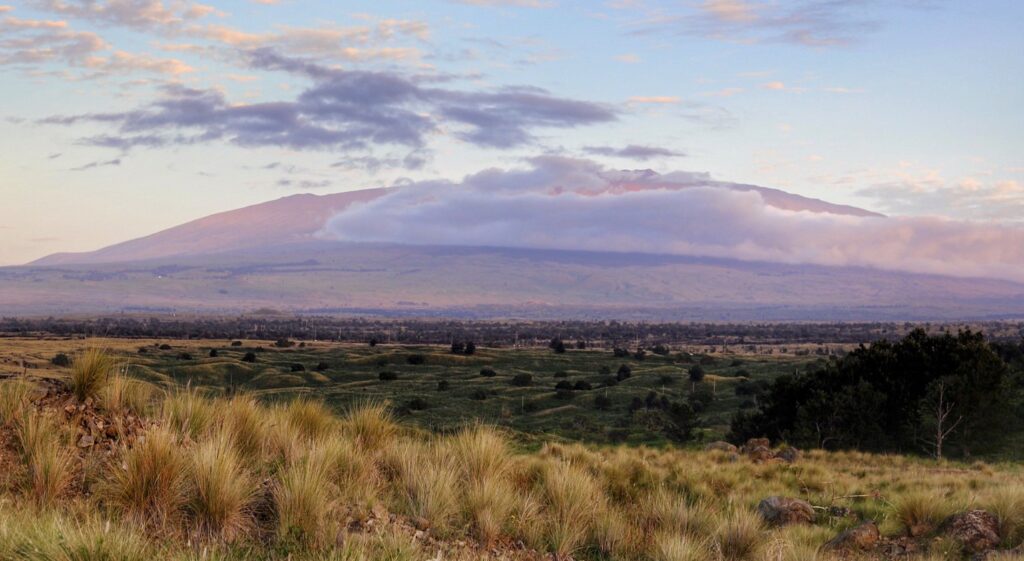
Mauna Kea: Hawaii’s Tallest Peak
Hawaii’s tallest peak is Mauna Kea, which rises 13,803 feet above sea level. Famous for being the highest point in Hawaii, this mountain is also referenced as the highest mountain in the world if measured from its base underwater. If this underwater starting point is taken into account, Mauna Kea is actually over 33,000 feet tall, making it taller than Mt. Everest and the tallest mountain on Earth.
Despite its impressive height, Mauna Kea falls less than 200 feet short of being a 14er. However, this impressive mountain is incredibly unique and massive.
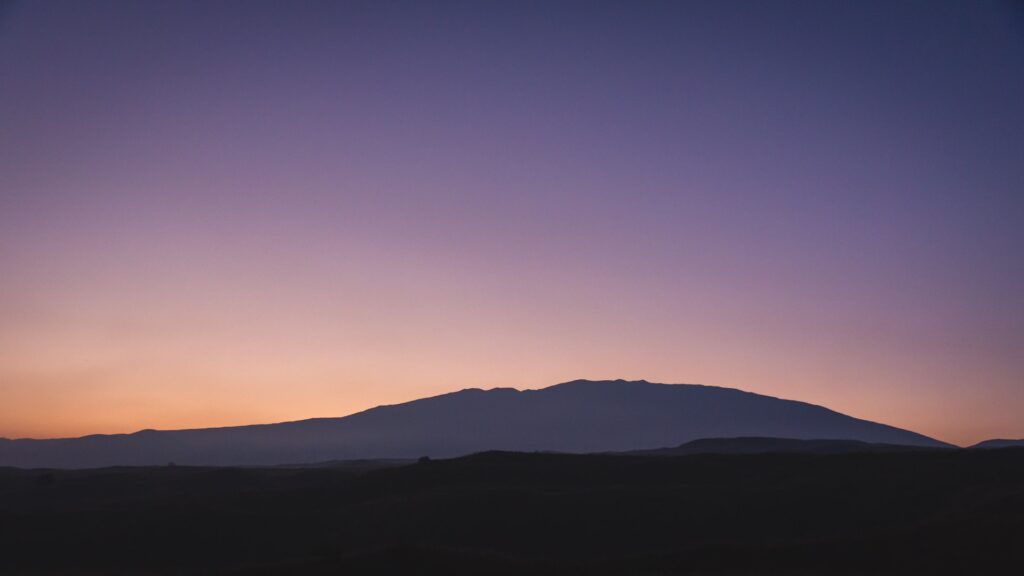
Mauna Kea Quick Stats:
- 13,803 feet tall
- 15th most prominent peak in the world with 13,803 feet of clean prominence
- 59th tallest mountain in the United States
- 6th tallest state high point
- Taller than Wyoming’s Grand Teton by 28 feet
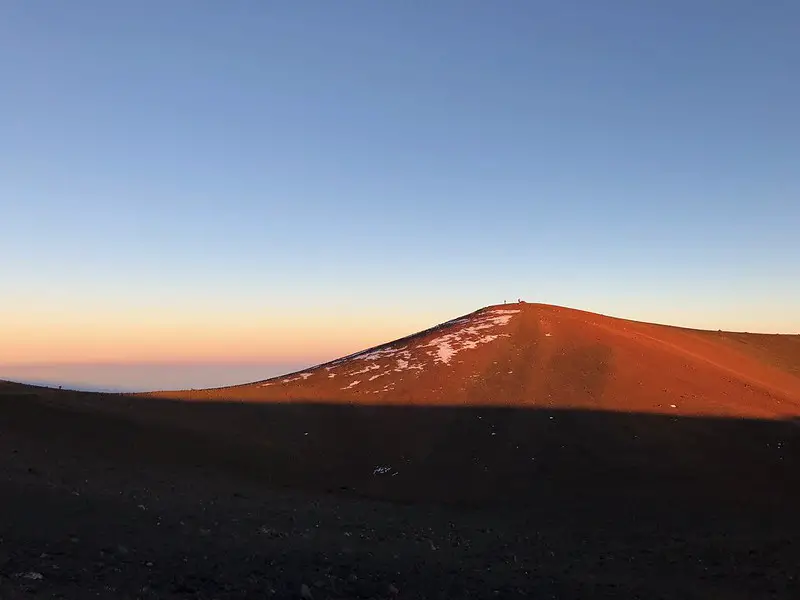
Mauna Kea Summit Hike
The Mauna Kea summit hike is a strenuous and challenging hike that takes place on the Big Island of Hawaii. The hike leads to the summit of Mauna Kea, which is the highest point in Hawaii and one of the best locations in the world for astronomical observations.
The hike is approximately 13.5 miles round-trip and takes several hours to complete. It offers breathtaking views of the surrounding landscape and a unique opportunity to witness the majesty of the night sky.
However, due to the high altitude and the harsh weather conditions, the hike is not recommended for inexperienced hikers and those with health conditions. It’s important to prepare properly and bring appropriate gear for the hike.
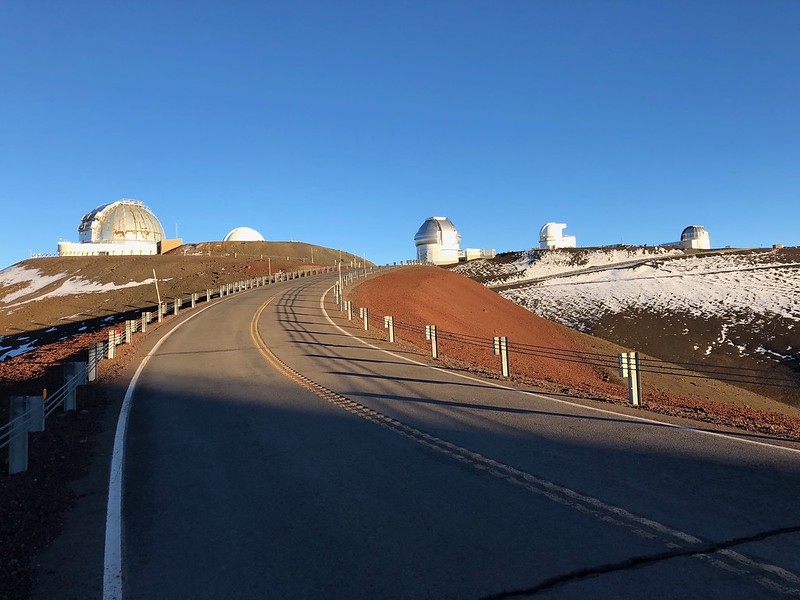
Mauna Kea Access Road
The Mauna Kea Access Road is a steep and winding road that leads to the summit of Mauna Kea, Hawaii. The road is over 14 miles long and is one of the steepest and highest roads in Hawaii. It is a popular destination for tourists and scientists alike, as it provides access to the summit of Mauna Kea, where some of the world’s largest and most advanced telescopes are located.
However, the road can be treacherous and is not recommended for inexperienced drivers. The road is subject to frequent closures during severe weather conditions, such as snow and ice, and visitors are advised to check for road closures and conditions before heading up.
The University of Hawaii provides real-time Mauna Kea road updates and closure info. Due to the high altitude, visitors are also advised to acclimate themselves to the reduced oxygen levels before attempting to drive up to the summit.
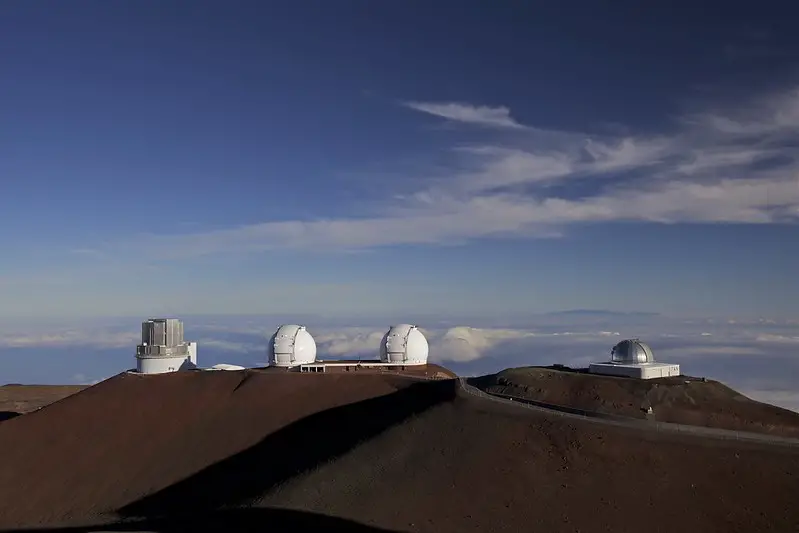
Mauna Kea Telescopes
The Mauna Kea telescopes are a collection of astronomical observatories located on the summit of Mauna Kea, Hawaii. With its high altitude, clear skies, and low levels of light pollution, Mauna Kea is considered one of the best sites in the world.
The Mauna Kea telescopes are used to study a wide range of astronomical phenomena, including stars, galaxies, and black holes. These telescopes include some of the largest and most advanced optical and infrared telescopes in the world, such as the Keck Observatory, the Subaru Telescope, and the James Clerk Maxwell Telescope.
Mauna Kea telescopes are operated by international partnerships of universities and research institutions. Their observations have made significant contributions to our understanding of the cosmos.
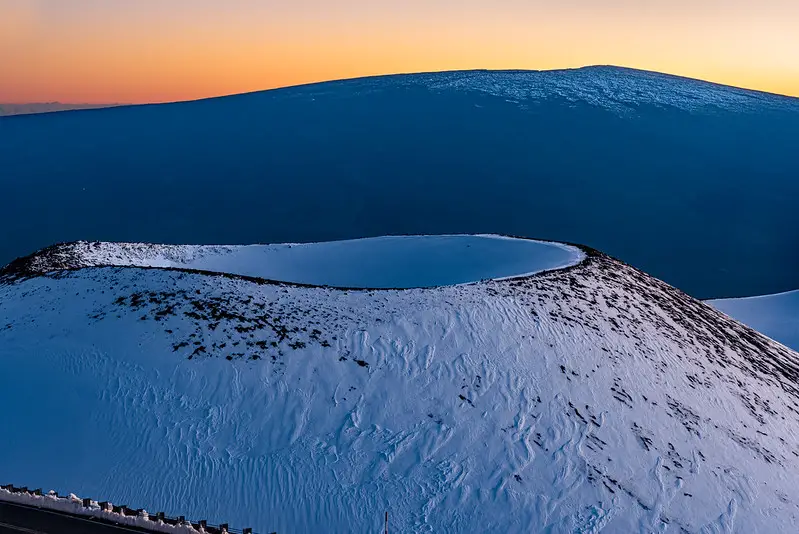
Mauna Loa: Hawaii’s Second Tallest Peak
The second tallest peak in Hawaii is Mauna Loa, which is the world’s largest shield volcano and rises over 13,679 feet. Mauna Loa is located next to Mauna Kea and is the only other mountain in Hawaii above 13,000 ft. The
Mauna Loa is an active shield volcano located on the Big Island of Hawaii. As one of the largest volcanoes in the world, both in terms of volume and area, and is considered to be the largest subaerial volcano on Earth. Mauna Loa has erupted 33 times since its first well-documented eruption in 1843, with its most recent eruption taking place in 1984.
Despite its frequent activity, the slopes of Mauna Loa are relatively gentle, making it one of the most accessible Hawaiian volcanoes for hikers and tourists. In addition to its geological significance,
Mauna Loa plays an important role in scientific research. It is one of the longest-observed and best-studied volcanoes in the world. Scientists study Mauna Loa to gain insights into volcanic processes and to better understand the interactions between volcanic activity and the environment.
Hawaii Topography
One of the reasons Hawaii doesn’t have a 14er is due to its location and geology. Hawaii was formed by volcanic activity and its highest peaks are the result of volcanic eruptions. Whereas the Rockies were formed by tectonic plate movements, Hawaii’s volcanic islands are not as tall as the peaks in the Rockies.
Additionally, Hawaii’s climate and vegetation are vastly different from that of the Rockies. Hawaii is a tropical paradise, with lush rainforests, palm trees, and exotic flowers. The Rockies, on the other hand, are known for their dry and arid climate, with sparse vegetation and rugged terrain.
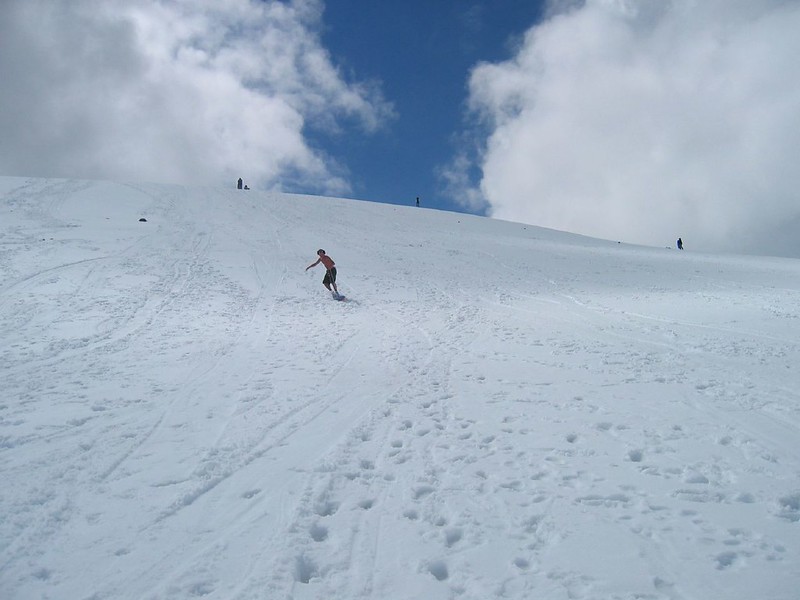
Does it Snow in Hawaii?
Snow is rare in Hawaii and only falls on the highest peaks of the islands. This typically only happens on the tallest peaks and is not common on the coastal areas.
Hawaii’s two tallest mountains, Mauna Kea and Mauna Loa are nearly 14,000 feet tall and receive snowfall during the winter months. However, the amount of snowfall varies from year to year and can range from just a light dusting to several feet of snow accumulation.
The summit of Mauna Kea is one of the highest points in Hawaii and a popular location for winter sports such as skiing and snowboarding. The Mauna Kea access road allows for vehicles to drive close to the summit, making it much more accessible. Snow conditions on Mauna Kea can change quickly and unpredictably. Visitors are advised to check the weather forecast before heading up to the summit and to prepare for cold and potentially dangerous conditions.
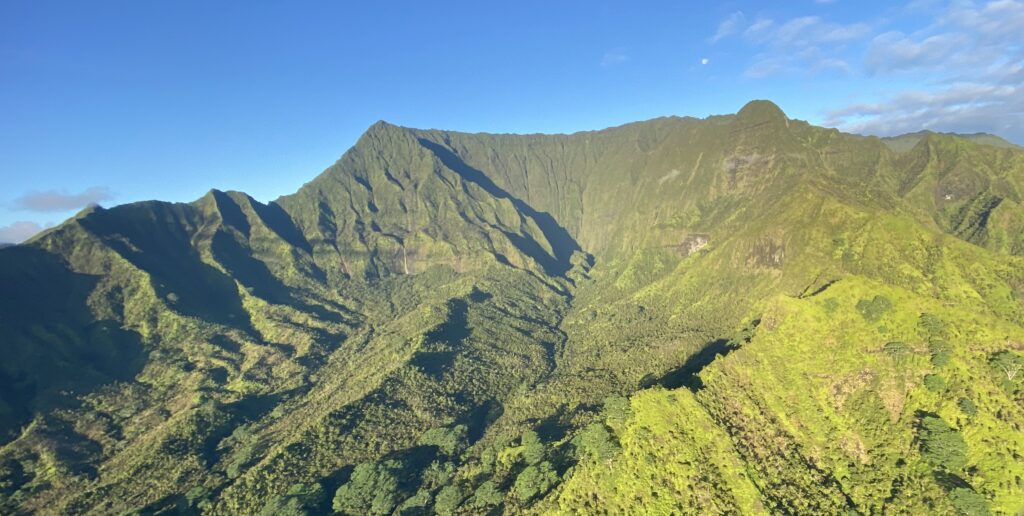
Hawaii Tallest Mountains Top 10
Here are the top 10 tallest mountains in the state of Hawaii listed by height and which island they are located on. Hawaii has 8 major islands. We’ve listed all the Hawaii tallest peaks by island below with mountains outside the top 10 as honorable mentions.
- Mauna Kea – 13,803′ – Island of Hawaii tallest peak
- Mauna Loa – 13,679′ – Island of Hawaii
- Haleakalā – 10,023 ft – Island of Maui tallest peak
- Hualālai – 8,271′ – Island of Hawaii
- Puʻu Kukui – 5,788′ Island of Maui
- Kaunu o Kaleihoohie – 5,500′ – Island of Hawaii
- Kawaikini – 5,243′ – Island of Kauaʻi tallest peak
- Kamakou – 4,961′ – Island of Molokaʻi tallest peak
- Olokuʻi – 4,606′ – Island of Molokaʻi
- Kaʻala – 4,060′ – Island of Oʻahu tallest peak
Honorable Mentions:
- Lānaʻihale – 3396′ – Island of Lānaʻi tallest mountain, 11th tallest overall
- Puʻu Moaulanui – 1483′ – Island of Kahoʻolawe tallest peak
- Mount Pānīʻau – 1,250′ – Island of Niʻihau tallest peak
No Hawaii 14er, but Two Hawaii 13ers
Hawaii does not have a 14er, but it still offers alpine environments and high elevations most people don’t associate with a tropical paradise.
Whether you are a seasoned hiker or a beginner, Hawaii has something to offer, from the lush rainforests of the island of Kauai to the stunning summit of Mauna Kea. So, pack your hiking gear and get ready to explore the unique beauty of Hawaii.

